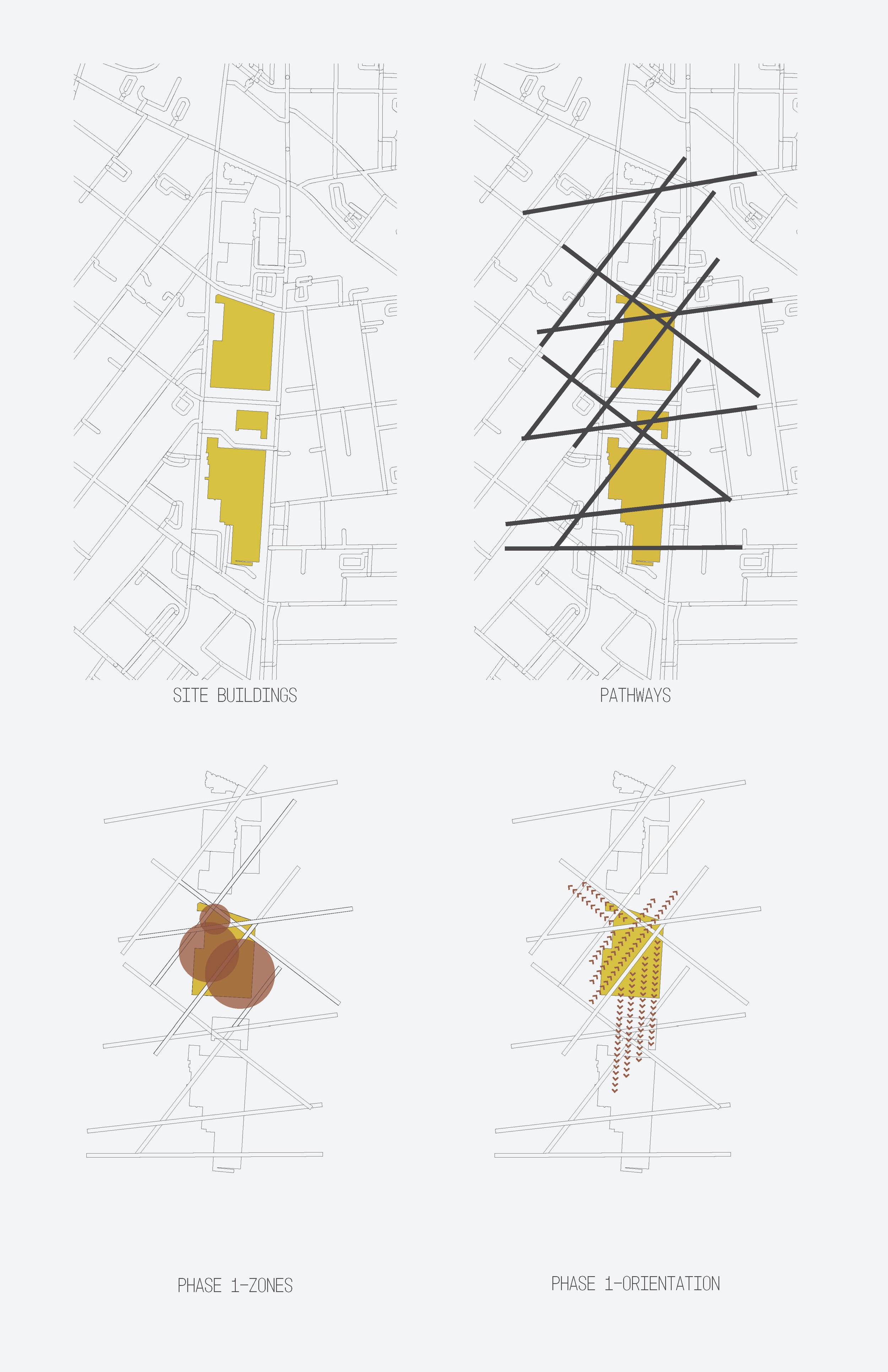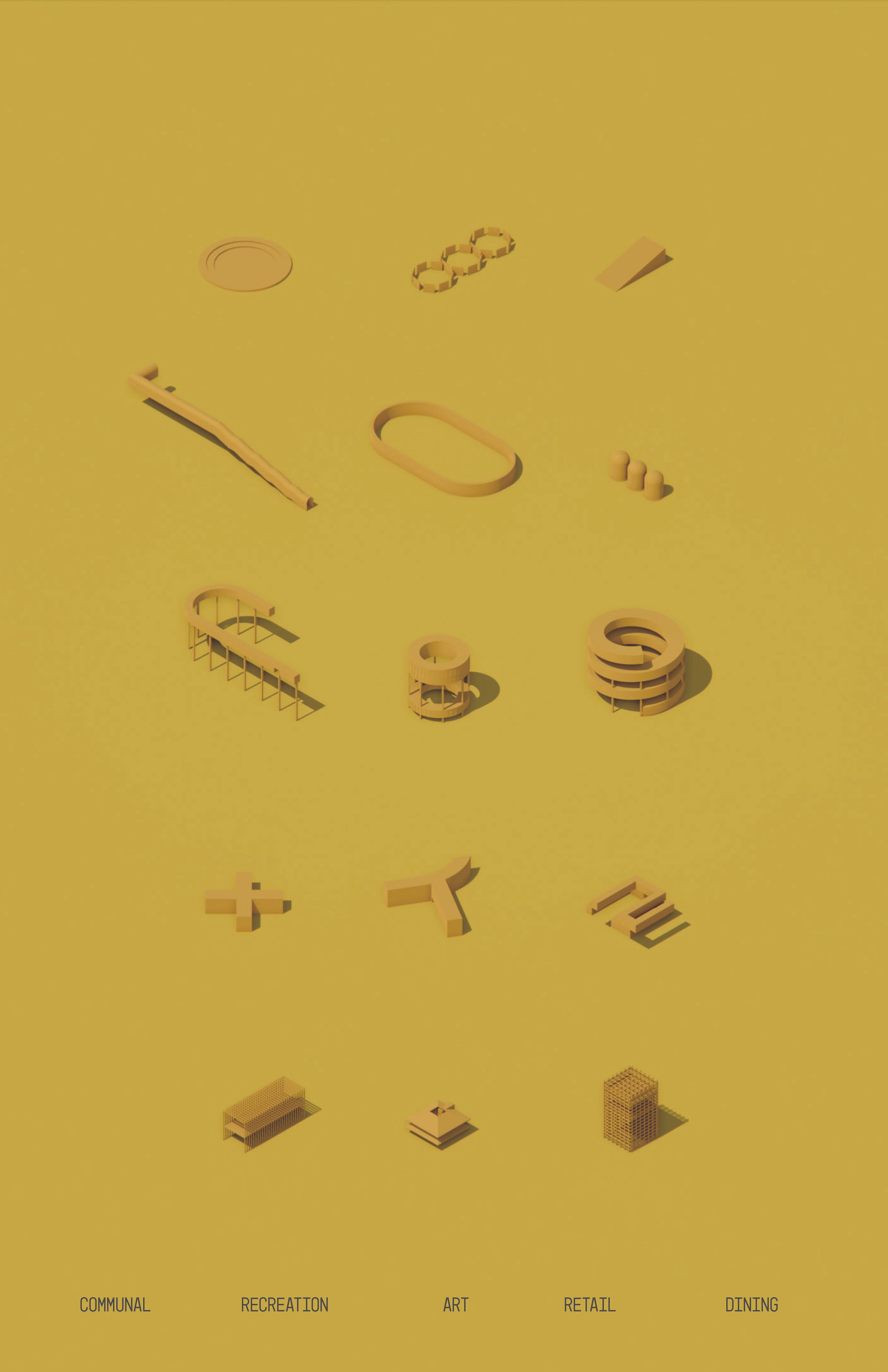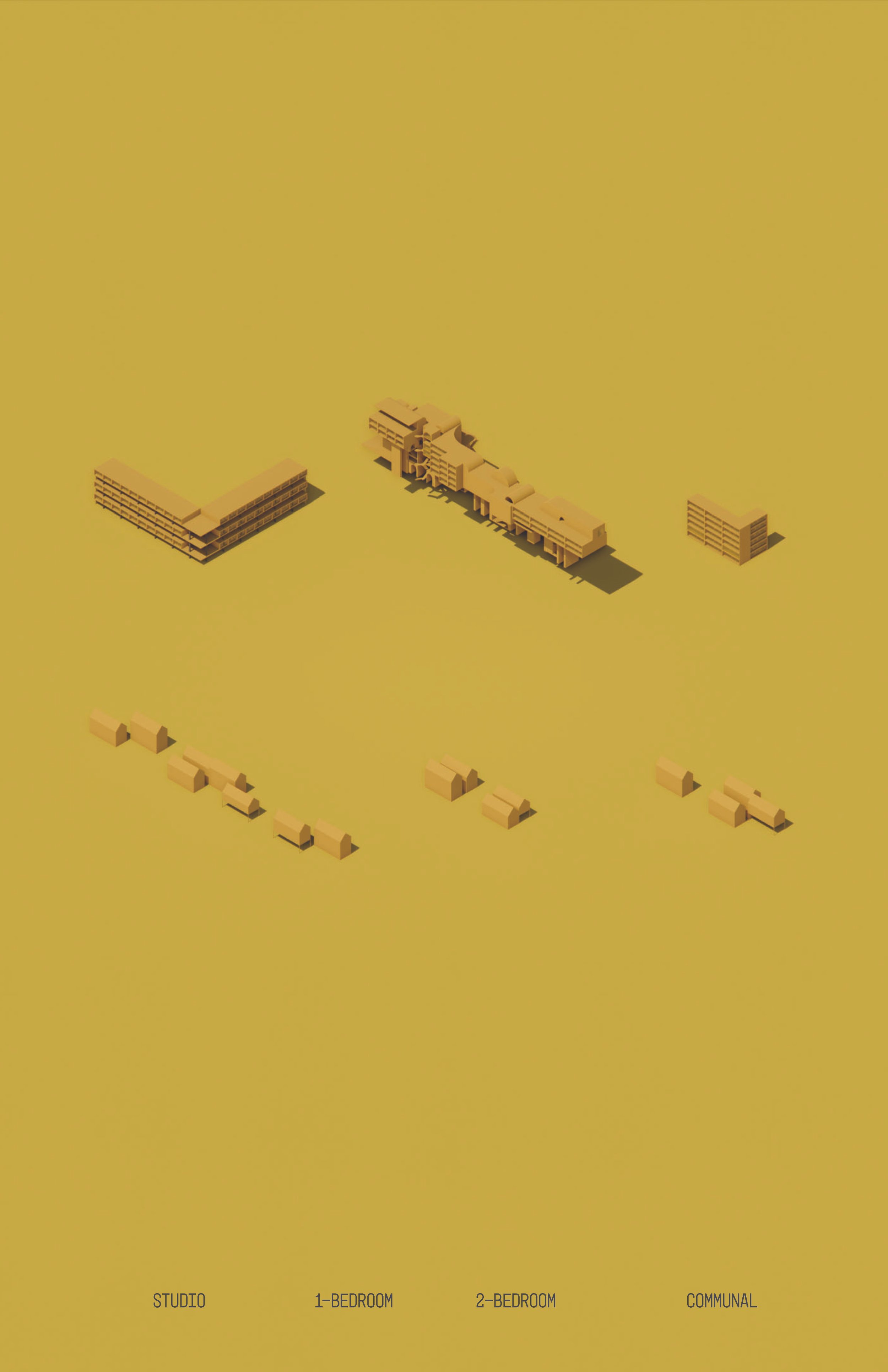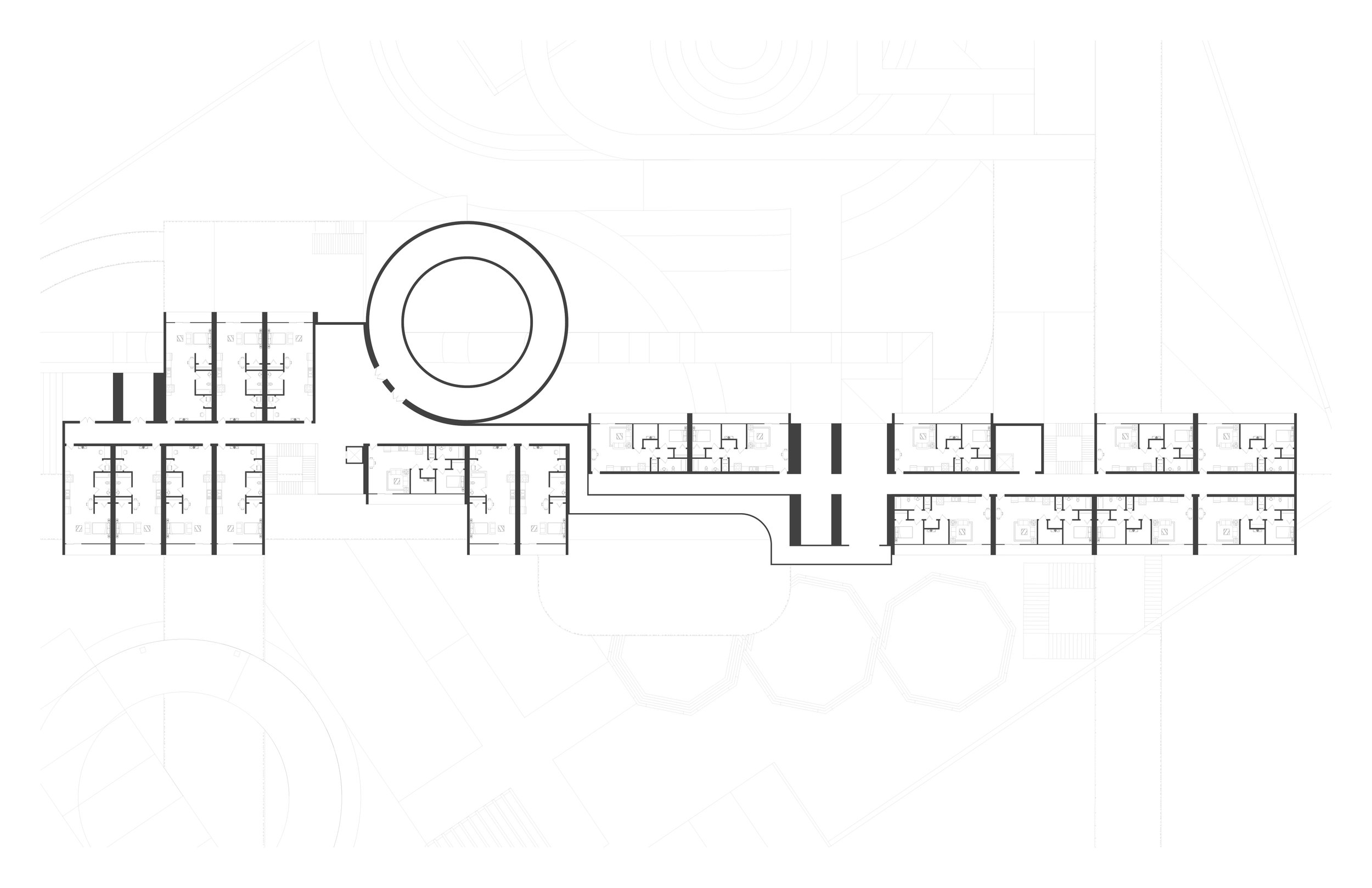Professor Ivan Bernal
The studio will borrow stage and prop design techniques used in stop motion movies such as The Life Aquatic with Steve Zissou (2004), and Pinocchio (2022), and by photographers such as Gregory Crewdson and Lara Zankouli as tools for architectural design. The students will deploy a collection of digital meshes, full-scale props, miniature models, photographs, animations, green screens, and projections to flicker between mediums of representation in the process of world building. The work will raise awareness of the different realities that architecture can occupy simultaneously, from full immersion to out-of-frame glimpses into the creation of fantastical stages. By shifting the lens of perception from the camera to the bystander, the work will move in and out of reality while increasing immersion through simulated layers and blurring disciplinary lines that produce fantastical scenarios and making us question and wonder about the nature of the architecture itself.
Samuel Schroeder
Atacama Observatory
A project conceived as a synthesis of 3 intercorrelated projects: site/formal development, physical fabrication, and staging/animation. These 3 phases used a simultaneous communication of digital, physical, and animation. Sited in the desolate infinite expanse of the Atacama Desert, a research station for astronomical observation is designed from a formal bundling of two pliant objects. The bundle is articulated as a sectional model to allow the architecture to set the stage for an animate story. Through the sequential phase of fabrication, the pliant, expressionistic, formal logic works as both an aesthetic legibility and a tectonic assemblage of parts. The sinuous tectonic kit-of-parts are familiarized by a piping system functioning as performative, structural, and aesthetic. The pipes perform as sentient actors which grow, self-manipulate, and adapt to the changing needs of the occupants.

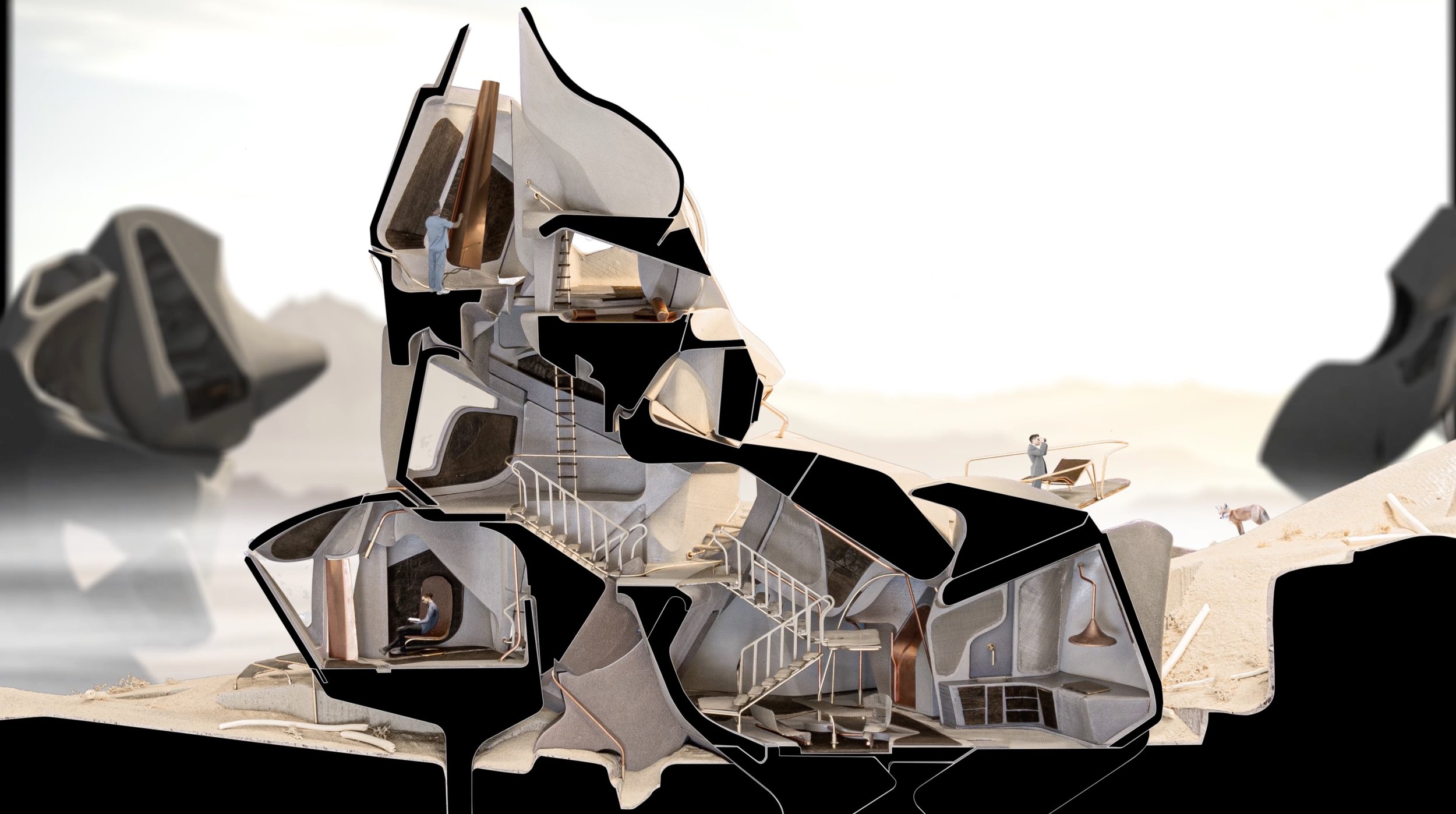
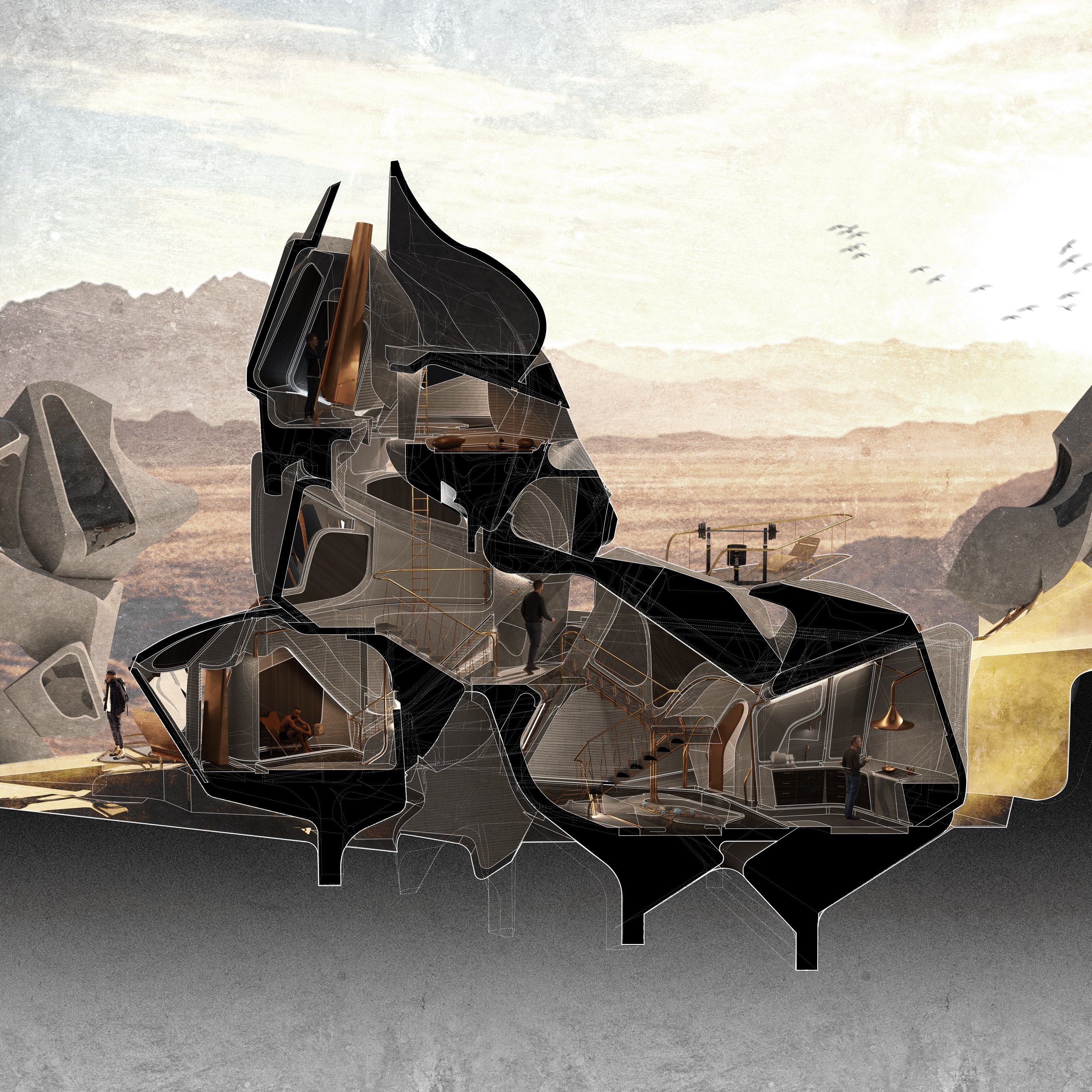





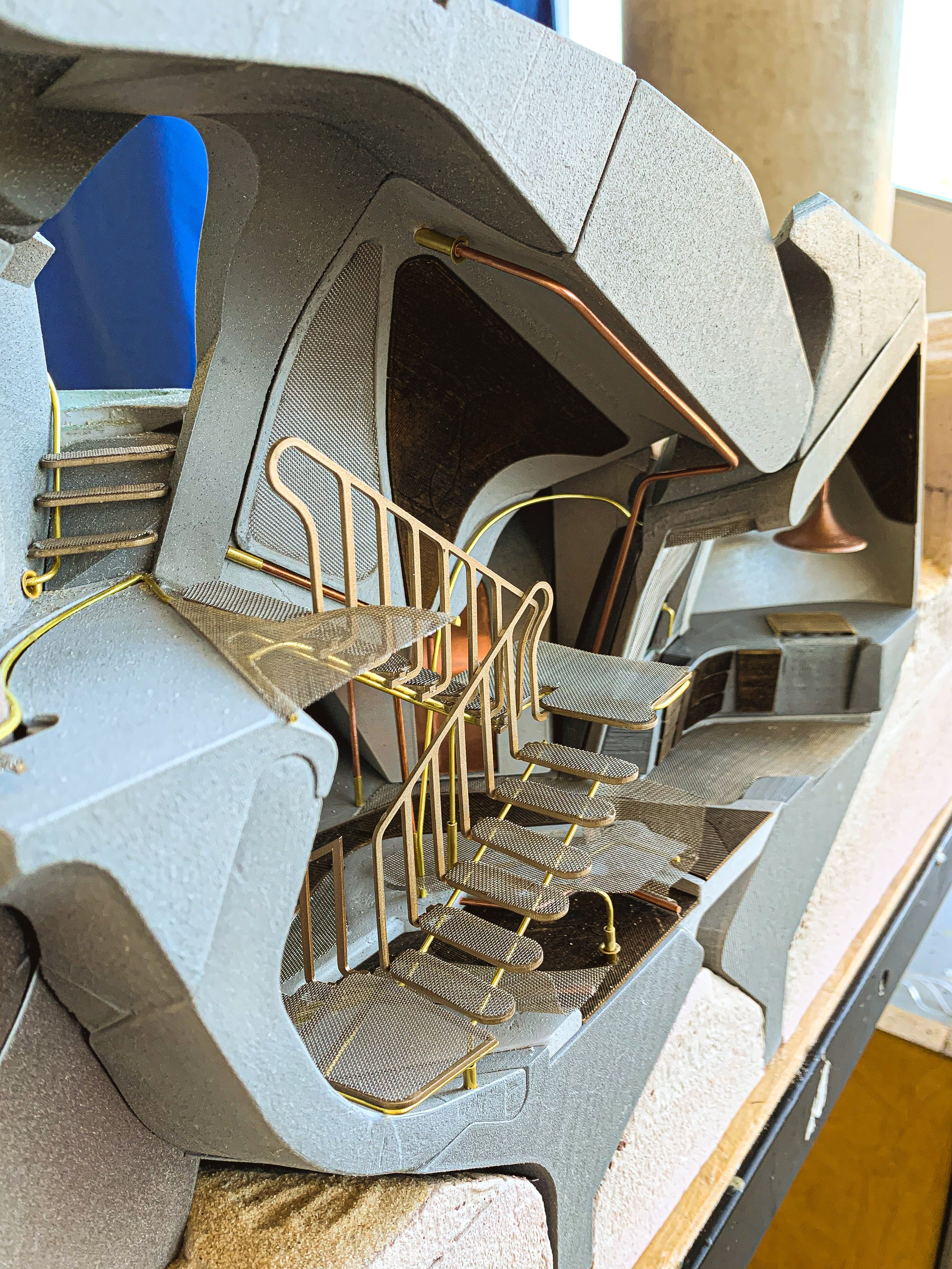
Professor Taraneh Meshkani
The homelessness crisis in Los Angeles, with its deeply rooted and complex causes, remains an unresolved challenge. Factors such as the lack of affordable housing, widespread poverty and unemployment, mental health and addiction struggles, and a shortfall in vital support services have contributed to the persistence of this problem. The city's existing efforts, encompassing emergency shelters and permanent supportive housing, have been unable to fully address the escalating situation. Recent statistics from the Los Angeles Homeless Services Authority (LAHSA) reveal more than 69,000 individuals living without a home in Los Angeles County, with an alarming 70% in unsheltered conditions. The trend of homelessness has seen a significant rise since 2013, reflecting the urgency and complexity of the issue. This studio offers students the opportunity to engage with the task of conceptualizing transitional housing projects for the city's homeless population. The focus is on creating pathways that lead towards reintegration into stable housing. By critically evaluating past and current transitional housing strategies, students will deepen their understanding of the barriers that hinder successful reentry into the housing market. In the framework of this studio, students will explore the intricate challenges of designing transitional housing in Los Angeles. They will engage in a thoughtful process, analyzing existing barriers and using that knowledge to craft innovative housing solutions. The objective is to go beyond mere shelter provision, creating environments that facilitate reintegration into the housing market and society.
Olivia Carpenter
the urban playground
Looking at the problem of homeless housing in Skid Row, the urban playground aims to challenge the entire concept of transitional housing through a modular system. The goal was to create an urban campground that provides a safe place for those in tents to be able to make a space of their own in a protected environment. By starting at the smallest module, the human body, I developed an 8’x8’ grid that serves as the basis for the entire design. The project is community driven with the creation of a megastructure that can be spread all throughout the Skid Row neighborhood. Urban playground reinvents the idea of a “tent city” to one that is more modern, denser and ultimately safer.









Kylan Canary
"Inner City"
Focusing on the issue of containment, "Inner City" blurs the line between Skid Row and the neighboring Arts District. A city within a city is developed as an approach to the homelessness crisis as programmatic typologies are placed within an existing "skin" to promote protection and foster community. A comprehensive entertainment district is formed, that of which integrates housing for the unsheltered amongst each core element. Residents located in and around Skid Row will be compelled to step inside this re-imagined city and see it from an inside point of view.
